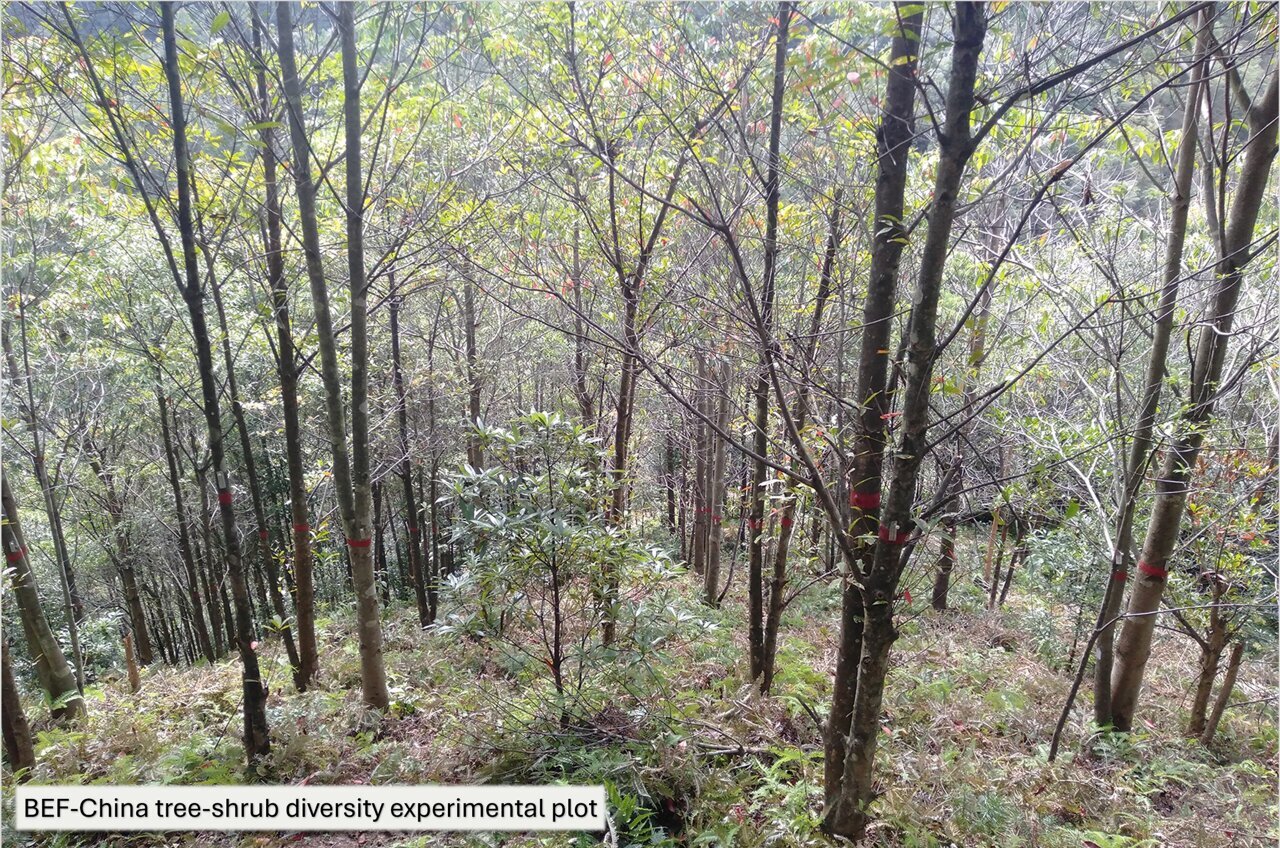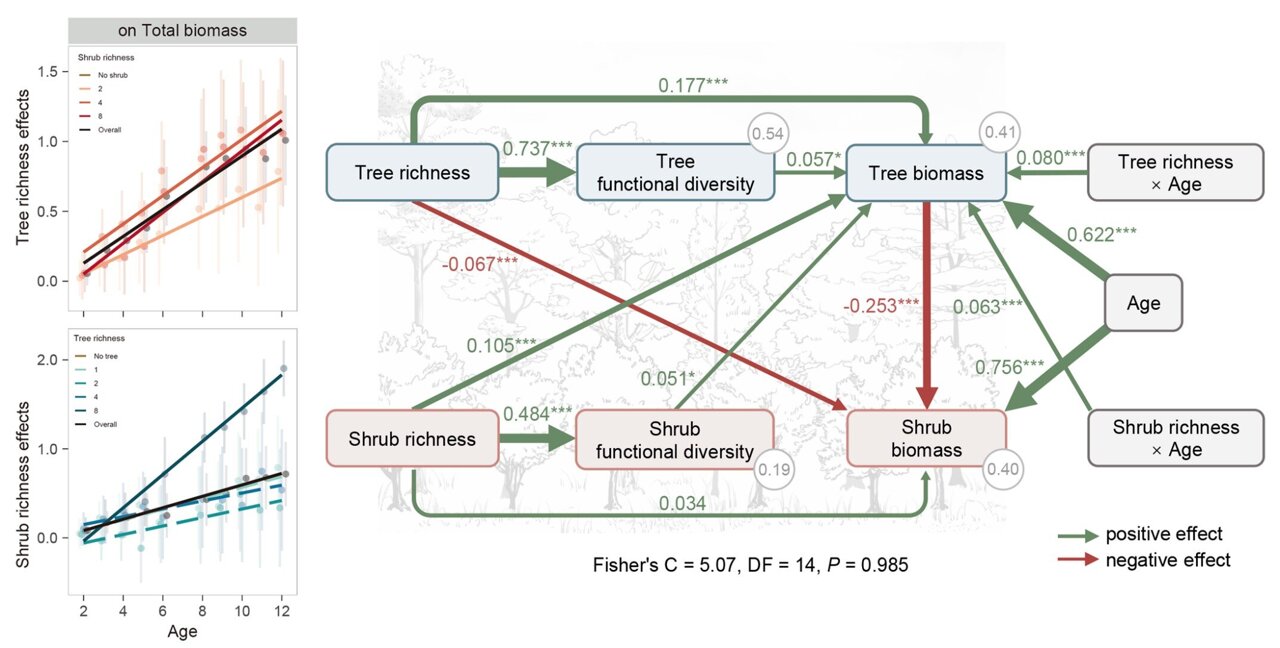
A recent study published in National Science Review Challenges the conventional focus on trees within forest ecology, highlighting that shrub diversity is essential for improving the functionality of forest ecosystems.
Prof. Liu Xiaojuan from the Institute of Botany at the Chinese Academy of Sciences led an 11-year study on forest biodiversity which strongly suggests that shrubs, typically seen as less important than trees, play a crucial role in enhancing forest productivity.
This research explored the impact of tree and shrub biodiversity on forest productivity by manipulating the variety of species within both levels and monitoring their development over an extended period. The findings showed that boosting shrub diversity from two to eight types led to a substantial increase: a 53.8% rise in tree mass and a 37.1% surge in overall woody biomass.
In comparison, boosting tree diversity across the same span increased tree biomass by 73.3%, and overall woody biomass went up by 46.8%. This indicates that shrub biodiversity has an impact nearly as significant as tree biodiversity in promoting forest productivity.
As time passed, the advantages of increased biodiversity among trees and shrubs grew increasingly evident, implying that this richness enhances the ecosystem’s functionality over extended periods. Nevertheless, the research highlighted a minor drawback: an increase in tree diversity led to a small decrease in shrub biomass, pointing towards intricate interactions between the two levels. Researchers attributed these impacts partly to heightened functional diversity—diversity in the various ecological functions performed by individual species—with respect to both the arboreal and shrubby components.

This study holds significant potential impacts on how we approach forest restoration and management. Although conventional methods have mainly focused on tree planting and biodiversity, this research underscores that a varied shrub layer plays an equally vital role in sustaining the overall productivity of ecosystems. Overlooking the importance of shrub variety in these initiatives might compromise the functionality of forests over time.
More information: Chen Chen and colleagues suggest that understory shrub diversity plays an equally crucial role in enhancing forest productivity as the diversity of overstory trees. National Science Review (2025). DOI: 10.1093/nsr/nwaf093
Provided by the Chinese Academy of Sciences
This tale was initially released on Massima . Subscribe to our newsletter For the most recent science and technology news updates.